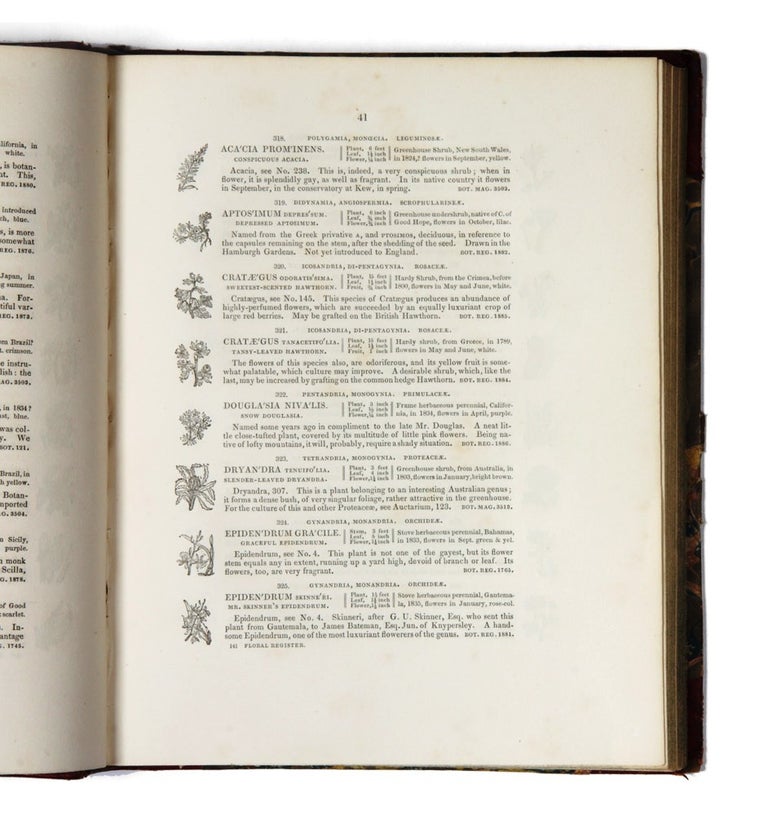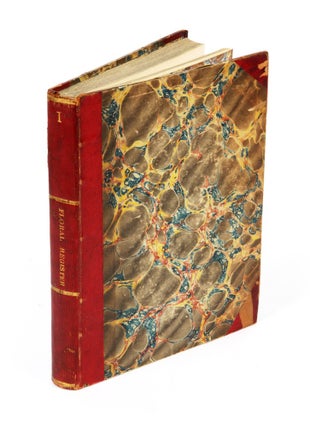The Floral Register…
The Floral Register; containing figures and descriptions of nearly all tender and hardy plants, which have been lately introduced to, and cultivated in Great Britain.
London: Simpkin, Marshall, circa 1845.
Small quarto, illustrated with over 1900 woodcuts; an attractive copy in contemporary red half roan, marbled boards and endpapers.
A remarkable work, a concise introduction to exotic plant species introduced to England until the early 1840s, with specific notice of plants from all parts of Australia including the new Swan River settlement.
A remarkable work, a concise introduction to exotic plant species introduced to England until the early 1840s, with specific notice of plants from all parts of Australia including the new Swan River settlement.
Benjamin Maund (1790-1864) botanist and horticulturist, started out as apprentice to Thomas Griffiths a printer and bookseller in Ludlow. In 1815 he bought his own business and moved to the High Street, where he prospered, combining his work as a printer and publisher with his passion for plants; at the rear of the business he had a large garden and was able to experiment with seeds and plants obtained from around the world.
Illustrated with 1917 delightful small woodcuts illustrating each of the plants described, this work was based on earlier notes which appeared in Maund's journal The Botanic Garden, an ongoing monthly first published in 1825. Each entry provides notes on the best place to cultivate the specimen (greenhouse, stove, etc.), its native country, season of flowering, colour of the flower and, crucially, date of introduction to England. Such a concise précis is of particular interest regarding the plants native to Australia, with a significant number coming from the Swan River, Van Diemen's Land, Port Jackson, King George Sound and other localities. To cite just one representative example, Maund describes the Splendid Hibiscus (No. 1269) in the following manner 'Stove evergreen shrub, New Holland in 1828, flowers in May, rose-colour… Such is the beauty of this plant, that in its native country, New Holland, it is considered the king of all known Australian plants; its flowers literally covering the shrub.' Given that over 200 of the specimens are from Australia, this work is therefore an important handlist to the study of Australian botany, and especially to the history of the cultivation of Australian plants in England and Europe.
Although not dated, the latest date of introduction for any plant we have noticed is from 1842.
Oxford Dictionary of National Biography; ; James Ford Bell; JCB, online version.
Condition Report: Good, small repair to spine
Price (AUD): $1,850.00
US$1,203.89 Other currencies







